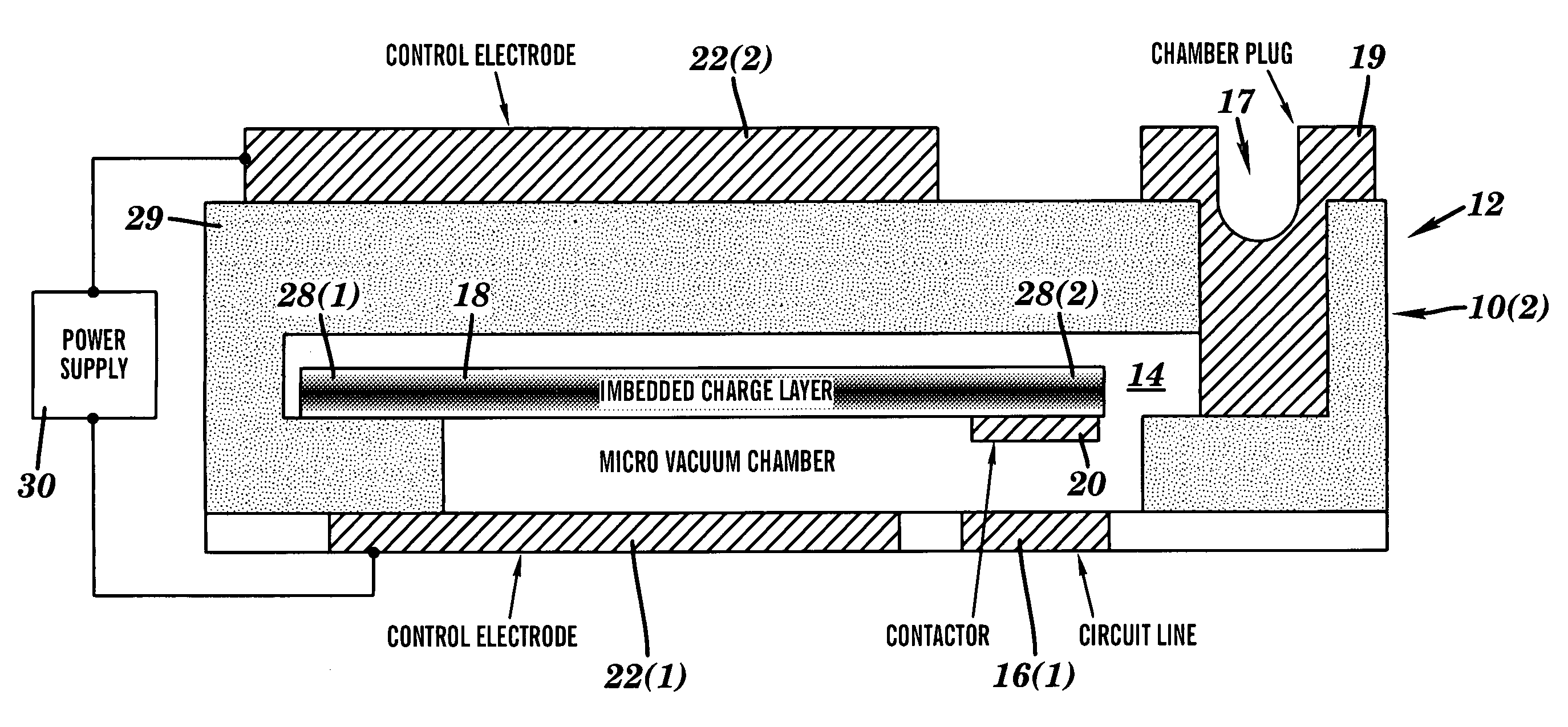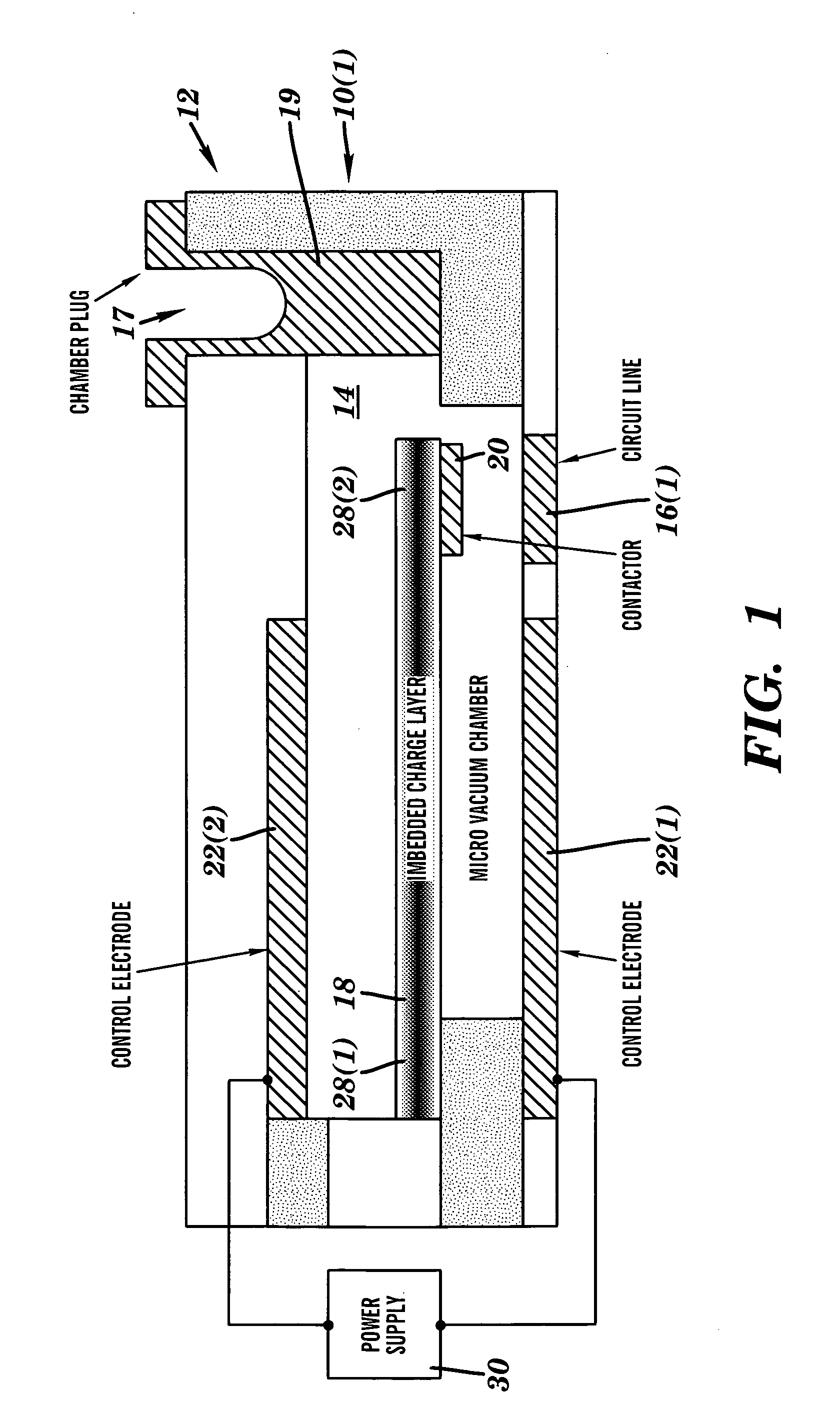Micro-electro-mechanical switch and a method of using and making thereof
a micro-electro-mechanical switch and switch technology, applied in the field of micro-electro-mechanical switches, can solve the problems of preventing their more widespread use, affecting the switching speed or response, and unable to apply a force in the opposite direction to release the mems, etc., to achieve the effect of low parasitic capacitance and high switching speed or respons
- Summary
- Abstract
- Description
- Claims
- Application Information
AI Technical Summary
Benefits of technology
Problems solved by technology
Method used
Image
Examples
Embodiment Construction
[0019]A switch 10(1) in accordance with at least one embodiment of the present invention is illustrated in FIG. 1. The switch 10(1) includes a switch housing 12 with a chamber 14, separated portions of a conductive line 16(1) and 16(2), a beam 18 with imbedded charge and a contactor 20, and control electrodes 22(1) and 22(2). The present invention provides a switch 10(1) that utilizes fixed static charge to apply attractive and repulsive forces for activation of the switch and to overcome stiction. This switch 10(1) has lower power requirements to operate, less parasitic capacitance, less mass, and faster switching speed or response than prior designs.
[0020]Referring more specifically to FIG. 1, the switch housing 12 defines a chamber 14 in which the switch 10(1) is located. The switch housing 12 is made of several layers of an insulating material, such as silicon dioxide, although other types of materials can be used and the switch housing 12 could comprise a single layer of materi...
PUM
 Login to View More
Login to View More Abstract
Description
Claims
Application Information
 Login to View More
Login to View More - R&D
- Intellectual Property
- Life Sciences
- Materials
- Tech Scout
- Unparalleled Data Quality
- Higher Quality Content
- 60% Fewer Hallucinations
Browse by: Latest US Patents, China's latest patents, Technical Efficacy Thesaurus, Application Domain, Technology Topic, Popular Technical Reports.
© 2025 PatSnap. All rights reserved.Legal|Privacy policy|Modern Slavery Act Transparency Statement|Sitemap|About US| Contact US: help@patsnap.com



